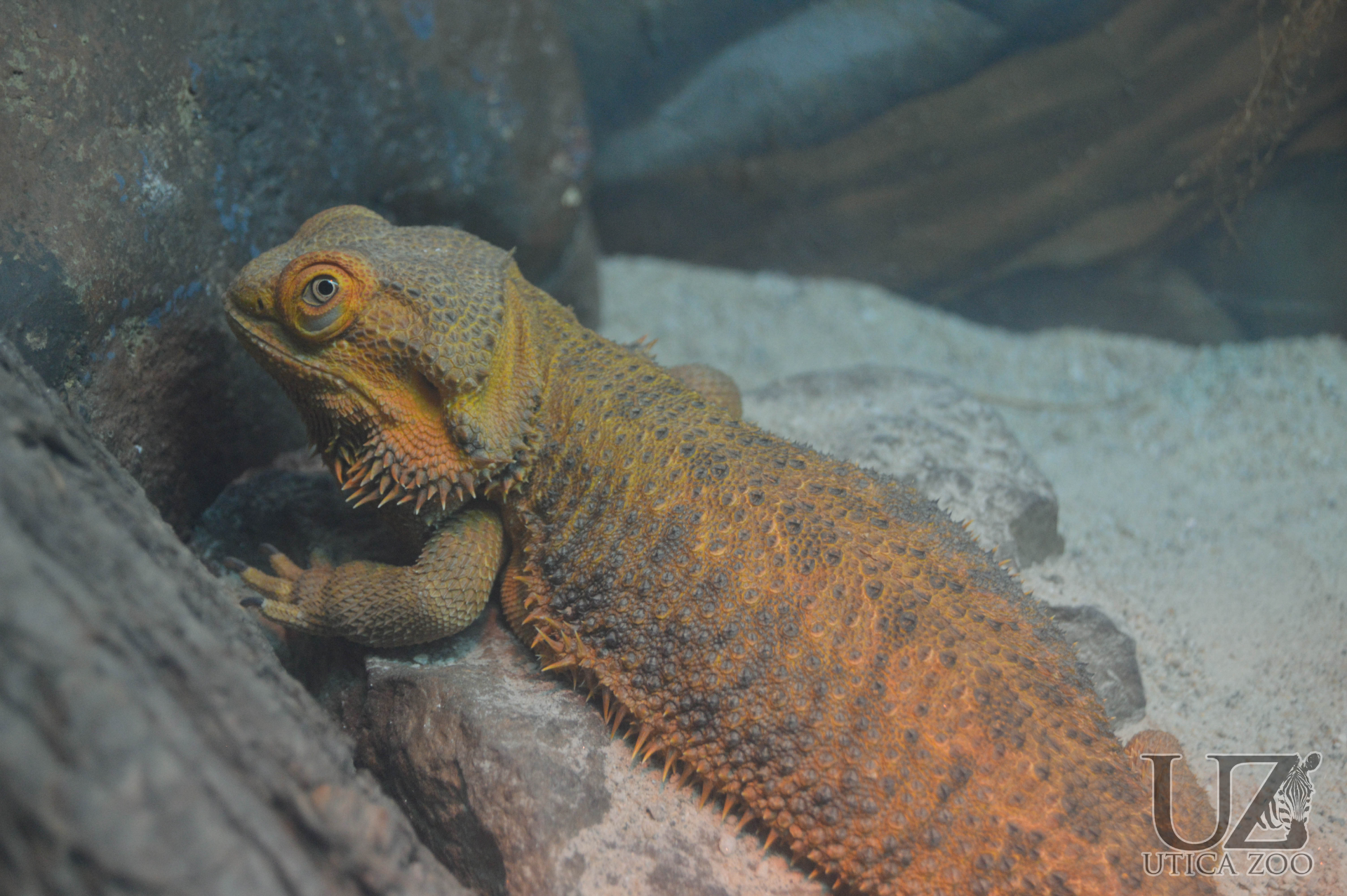Bearded Dragon

Basic Information:
Scientific Name: Pogona barbata
Habitat: Bearded dragons can be found in the savannahs, arid and tropical forests, and shorelines of central and eastern Australia.
Diet: Bearded dragons are opportunistic omnivores meaning they will eat almost anything that they can fit in their mouths including both plant matter, insects, and even small rodents.
Size: 1.5 to 2 feet long
Weight: 0.8 to 1.1 pounds
Lifespan: 5 to 8 years in the wild. 10 to 15 years in human care.
Distribution Map:
I.U.C.N. Conservation Status:

What does this mean?
Least Concern – a species determined by the International Union for Conservation of Nature (I.U.C.N.) to be pervasive, abundant, and thriving.
Our Bearded Dragon:
Mushu (Female) – Estimated Date of Birth January 2018
About Bearded Dragons:
Native to the deserts of Australia, bearded dragons get their name from the distinctive dewlap on their chin which can grow and change color depending on a variety of factors: stress, mating rituals, territorial gestures, and more. They are also very territorial against other Bearded Dragons (particularly when 2 males are involved). Dominant Bearded Dragons will show off their status through head bobbing. If this display doesn’t work, they will fight. And once it goes south for one of them, they can quickly zip away by running up to 9 miles per hour. All this being said, Bearded Dragons are known for being very relaxed and calm when around people which makes them very popular pets. In fact, they have a tendency to bond closely with their owners and will even show signs of affection. Bearded dragons are the only reptile known to show this sort of emotion to their owners.
Did You Know?!
- Bearded dragons are named for their beard: a dewlap, or chin-fold- that features many spikes and can expand. Bearded dragons usually expand their beard when they are stressed, mating, or claiming territory.
- Both male and female bearded dragons have these beards and they can change to a darker color when the lizard is especially upset.
- Bearded dragons are agile lizards that can be quick when they want to be, but are usually rather docile.
- Bearded dragons have sharp claws that are good for digging or latching onto a log or branch. They can climb and have even been observed swimming.
- Although it is not common, bearded dragons can run on their two back legs rather than all four.
- Bearded dragons pee powder and not liquid! This is one way that bearded dragons are able to conserve water in their arid natural habitats.
